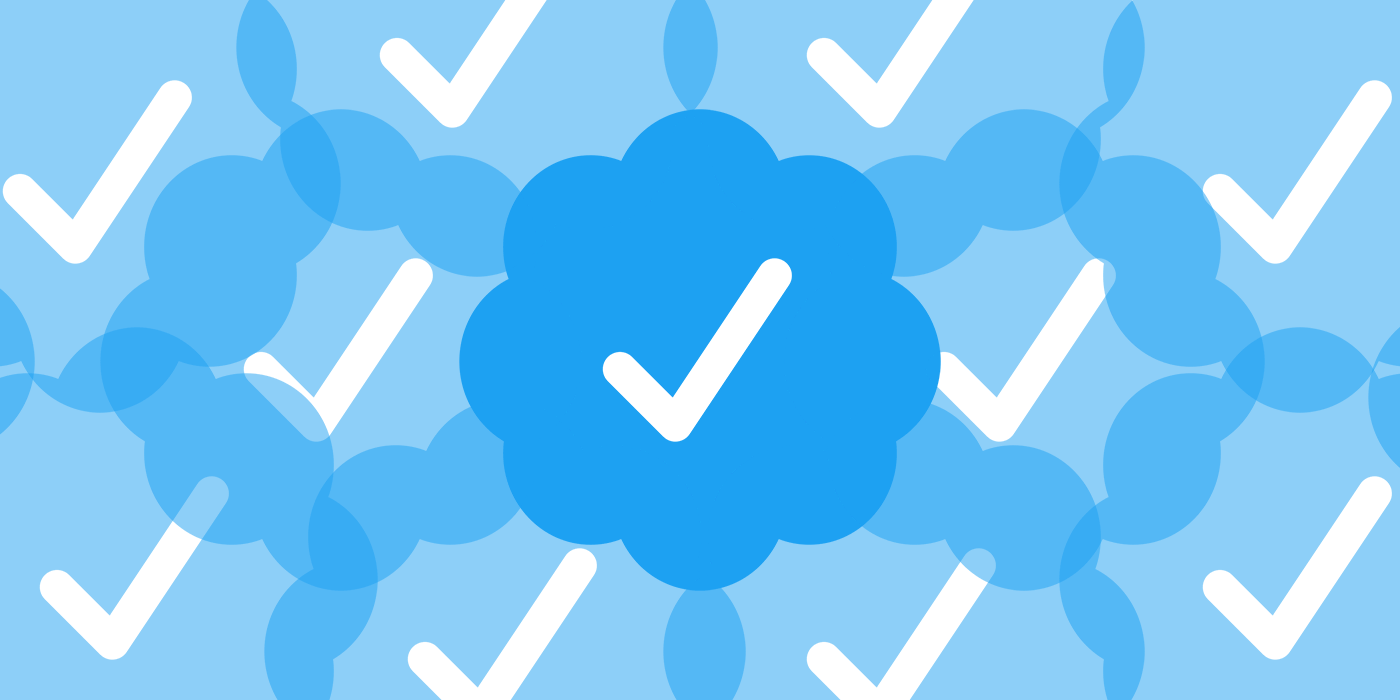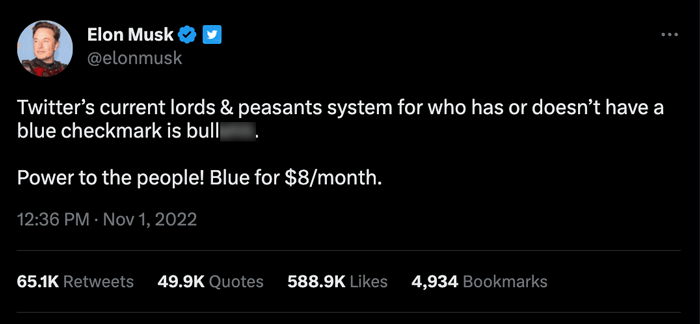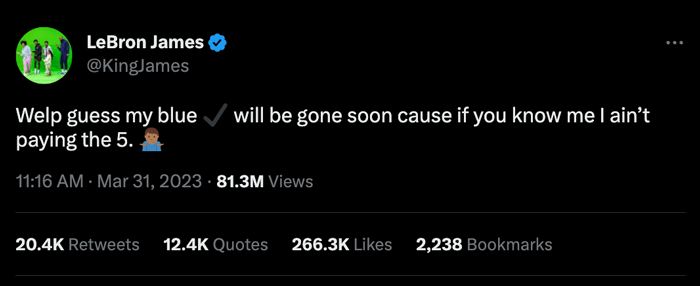Twitter's Blue Check: What Does It Mean Now?

For most of Twitter's existence, users craved the validation that came from becoming blue-checked. This designation, denoted by a blue checkmark icon that appears next to the user's username, was a sign that Twitter deemed a user to be especially notable, as well as genuinely who they said they were.
During this period, blue-checked users were considered important, elite cogs in the Twitter machine. "Without you," a user's blue checkmark said, "Twitter wouldn't be what it is." It's no wonder then that many Twitter users, an attention-seeking bunch if ever there was one, sought to achieve this largely out-of-reach status symbol. Eventually, users even forced Twitter to publish criteria for how the company decided which accounts to blue-check, as well as an application page through which users could apply to become blue-checked (if they met the criteria).
Elon vs. the blue check
This, largely, was the blue checkmark's status quo when billionaire tech bro Elon Musk bought Twitter in 2022. Musk, a blue-checked user himself, was a famous critic of the checkmark and Twitter's sparing, strategic application of it. In Musk's eyes, the checkmark was a symbol of elitism, used to privilege celebrities, influencers, and businesses over ordinary Twitter users.

So, soon after purchasing Twitter, Musk announced he would make the ability to become blue-checked available to all users - provided they were willing to pay for it. Purchasing a monthly subscription to Musk's Twitter Blue service gave users (among other things) access to the blue checkmark, signaling that their account was just as important (and authentic) as any other blue-checked user's.
Blue-checked? More like who's-checked
It was at this point that chaos ensued. Quickly, regular users began purchasing the blue checkmark, changing their usernames and profile pictures, and impersonating celebrities and businesses - impersonations that many believed because of the users' blue checkmarks.
Meanwhile, Musk began threatening to strip blue checkmarks from previously-verified users who would not pay for Twitter Blue. In response, many of those users said ... go ahead. Because the blue checkmark was now available to everyone, many who previously held the checkmark no longer wanted it. (Especially since doing so would signal they were vain enough to pay for a checkmark.)

Met with this wave of indifference and criticism, Musk backpedaled the removal of checkmarks for at least some previously-verified users. He did this, however, without telling those users. This led to some active users, like LeBron James and Stephen King, and some deceased users, like Anthony Bourdain and Kobe Bryant, retaining their checkmarks despite not paying for them. James and King, notably, had previously publicly stated they would not pay to keep their checkmarks. Forcing the checkmark upon them was a way for Musk to get back at them for their criticism.
What being blue-checked on Twitter means now
All this change to how users acquire the blue checkmark has shifted the connotations of what it means to be blue-checked on Twitter. Now, blue-checked accounts are not primarily thought of as being verified, elite Twitter users. Instead, they're thought of as being loyal to Elon Musk, whose opinions and changes to Twitter (including but not limited to the blue checkmark) have proven divisive. Blue-checked users are also thought of as being vain enough to purchase a status symbol that, because it is now available for purchase, is no longer a status symbol. (Or at least, not the same symbol it was previously.)
Because of this shift, many users now deride others who they know purchased the blue checkmark, using the terms blue check and blue-checked in a derogatory way. Meanwhile, those who have purchased the blue check use it as a rallying point for celebrating Musk and each other. And, as noted above, many legacy checkmarked users are working to get rid of their Musk-gifted checkmarks, because they don't want the checkmark's shifting meaning to apply to them.
While the saga of Twitter's blue checkmark is likely not over, the connotations of what it means to be blue-checked have already almost entirely changed. Now, in many people's minds, being blue-checked is not a badge of honor. Instead, it's a badge of vanity and loyalty to Twitter's new CEO.